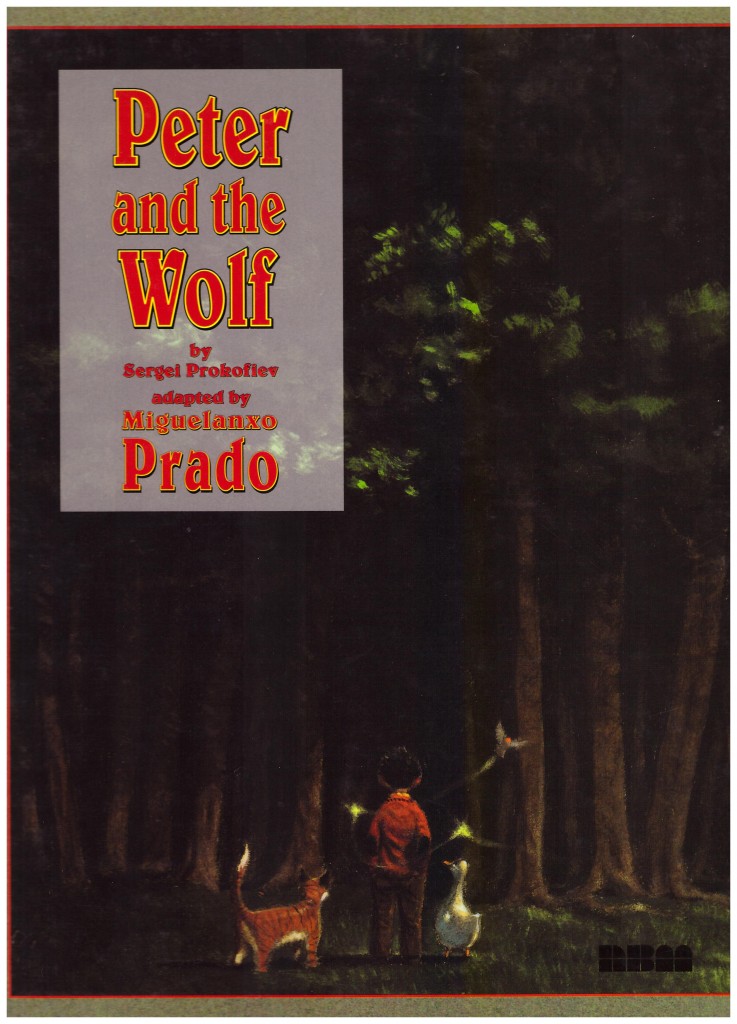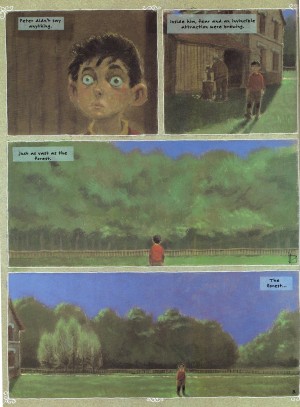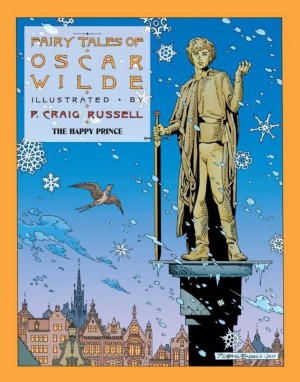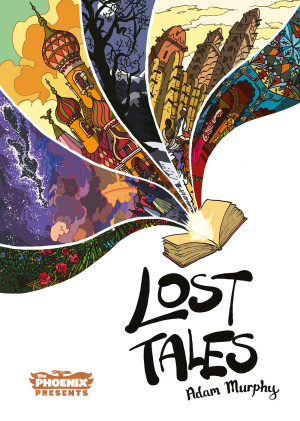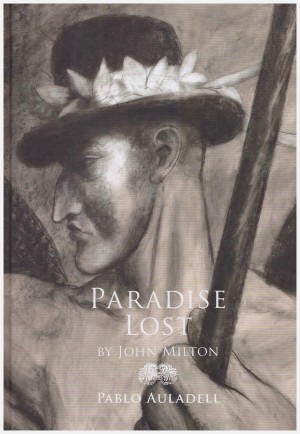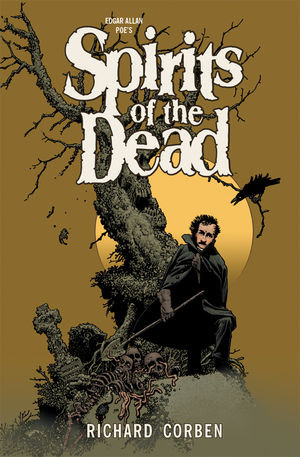Review by Ian Keogh
It has the feel of a classic fairy tale, but Peter and the Wolf was created by Sergei Prokofiev when asked to produce a ballet that could be performed by children. Outside the classical music fraternity it’s become his defining work. In his introduction Miguelanxo Prado writes of wanting to evoke the warmth of childhood with his adaptation, a time when a frisson of terror still occurred despite the comfort of blankets and the presence of a grandparent reading. It’s a wide-eyed wonder he very deliberately evokes with his art.
Peter lives with his grandfather in an isolated house at the edge of a vast forest, and is warned never to venture in as he’ll not return due to the presence of a wolf as vast as a hurricane. Despite instilling fear, childhood curiosity is rarely so simply dispelled, and when Peter strolls into the forest the message is reinforced by the duck he first meets, while the robin that accompanies him is less cautious.
Despite the hardcover presentation, Peter and the Wolf is a very short work, clocking in at a mere 24 pages. But what pages! Length alone is no definition of quality, and almost all of the individual panels are fit for framing. Prado looks to have painted them, then worked into some with coloured chalk for a distinctive look. Within this painterly approach Prado emphasises isolation by depicting Peter as dwarfed by his surroundings, be it the forest or his house. This is further highlighted by the colour identifying Peter in dark red while all around him is green or brown. Dark shades prevail until the final page, with the brief light elements extremely effective as contrast. A nice touch is that the size of the wolf has been exaggerated in warnings, and the art has a slight blurred quality that increases the unease.
For all the genius of the art, Peter and the Wolf isn’t a story that translates well to comics. It was written specifically for performance and compressing sequences extended to accommodate this results in an unsatisfying narrative. Events rush headlong from Peter’s first actual sight of the wolf to the conclusion, from fear to aspiration, giving the impression that some elements have been cast aside. They haven’t, and if anything Prado has slightly modified the opening section to prolong matters.
Prado’s graphic novels have been infrequent in the 21st century, but sales of earlier work have seemingly determined he no longer merits translation into English, which means we’re being deprived of the work of a master.
